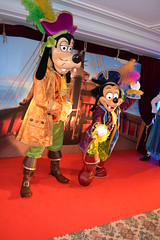Big tank at Monterey Bay Aquarium gets major face lift

Washing the aquarium isn’t fun. Request any tropical seafood enthusiast with a set of angelfish, some gravel along with a couple of plastic plants.
But let’s say the tank is 35 ft deep and it has a window how big a drive-in movie screen?
With what might be mom of aquarium spring-cleaning projects, the Monterey Bay Aquarium is putting the ultimate touches about the overhaul of their Outer Bay tank — single million gallon structure that holds more water compared to other 90 tanks within the aquarium combined and ranks one of the biggest tanks within the U . s . States. It’s a part of a $19 million transformation that re-opens towards the public Saturday.
“It has been like remodeling a 30,000-square-feet home while 18 individuals are residing in it,” stated David Cripe, special exhibits coordinator in the aquarium. “We stressed over the way you would move things and catch things. But we first got it done two days in front of schedule.”
The exhibit, re-christened Outdoors Ocean, features new species within the large tank along with other nearby shows, including a sand bar shark from The island of oahu, tufted puffins along with other seabirds, a higher-tech video chat wall display on plankton, offshore jellies and numerous art installations. Aquarium researchers also plan to usher in a brand new juvenile great whitened shark in September, the sixth whitened shark the aquarium may have placed on display since 2004.
No aquarium on the planet presently includes a great whitened shark displayed.
A hard
journey
On Monday, a large number of volunteer docents getting their start looking walked around artists, welders along with other construction employees who have been putting the ultimate touches about the exhibit. Because they oohed and aahed in the refurbished marquee tank, with twinkling schools of sardines darting past languidly floating mahi mahi and hypnotic ocean turtles, they might not have recognized the lengthy road of scientific learning from mistakes, difficulties and hard work to find the project this far.
The aquarium closed the large tank towards the public last August. It appeared the bluefin and yellowfin tuna — most of which had grown to a lot more than 300 pounds using their original dimensions of no more than 25 pounds — were creating such turbulence within the water because they swam fast that glass tiles within the tank were falling.
“The eco-friendly ocean turtles were eating the tiles,” aquarium spokesperson Ken Billings stated. “They did not harmed. They’d pass them. But we did not wish to risk it.”
The tank needed upgrading anyway, aquarium managers thought. So that they drained all of the water in to the sea. Although not before catching the roughly 10,000 species within the tank first. That required three days.
Aquarium biologists used a specifically designed internet to trap the 9,000 sardines. They caught the 3 dozen tuna with fishing line and barbless hooks. They attracted the ocean turtles and hammerhead sharks with food and lifted all of them with gurney-like slings from the water.
Some creatures did not allow it to be. A couple of tuna were too large to maneuver and needed to be put to sleep, Cripe stated. One hammerhead shark also died. However the huge majority made it the upgrade. These were put into tanks on trucks and shipped for an aquarium facility 10 miles north in Marina.
Employees underneath the direction of contractor Rudolph and Sletten in Redwood City, which assisted install the tank when it was initially built in 1996, removed from the tiles. They covered the abs plastic walls with new sealant. They installed a wave machine to produce chop about the water’s surface, like on view sea. They polished the huge acrylic home windows and added new water-heating systems — a “turtle elevator” to really make it simpler for vets to lift ocean turtles from an adjacent holding pen towards the primary tank. New lighting helps make the colors from the creatures within the tank shimmer because they pass while watching yawning window.
Where once site visitors saw sides along with a bottom, description of how the see what seems to become endless blue. It is the same sight that most of the species see because they are moving as much as 10,000 miles every year over the Gulf Of Mexico, a pattern the new exhibit highlights, depending on research with satellite tags done previously decade by Stanford College, UC Santa Cruz along with other marine centers.
“It feels a lot more like you’re seeing outdoors sea now,” stated Jaci Tomulonis, senior exhibit developer. “Before, it had been as an exhibit tank.”
Conservation education
Additional exhibits explaining animals such as the humpback whale, leatherback ocean turtle and albatross are scheduled to spread out in Feb. Plus they, such as the refurbished wing opening on Saturday, carry conservation messages towards the aquarium’s 1.9 million annual site visitors about overfishing, plastic pollution within the sea and climatic change, a part of a trend the aquarium has outlined progressively because it opened up back in 1984 having a $55 million gift from tech leaders David and Lucile Packard.
The aquarium is the chief sponsor of the bill continue within the California Legislature to prohibit the trade in shark fins, a topic which has split china-American community and triggered considerable political outcry.
“It isn’t enough to exhibit people beautiful sea creatures, specially when we all know the risks they face,” stated Billings. “We are worried. We would like individuals to engage and really make a difference.”